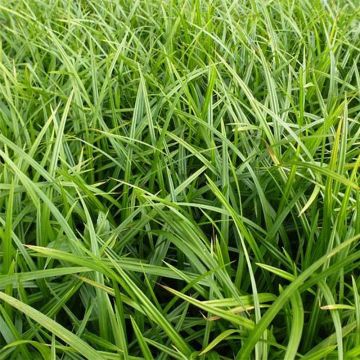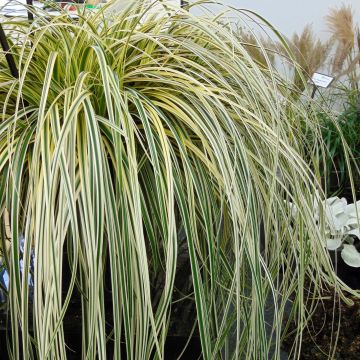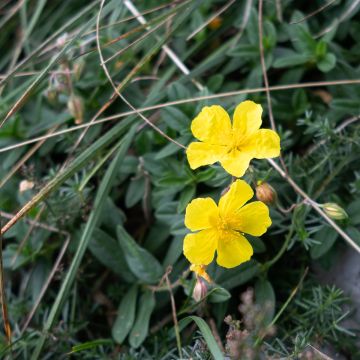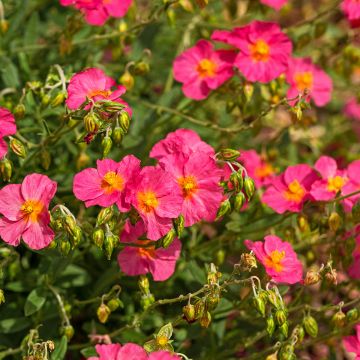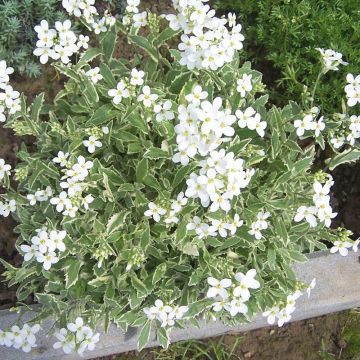

Carex oshimensis Eversheen - Oshima Sedge


Carex oshimensis Eversheen - Oshima Sedge


Carex oshimensis Eversheen - Oshima Sedge
Carex oshimensis Eversheen - Oshima Sedge
Carex oshimensis EverColor® Eversheen
Evergreen Sedge, Oshima Sedge, Japanese Sedge
This item cannot be shipped to the selected country
Delivery charge from €5.90
Delivery charge from €5.90
Delivery charge from €5.90
More information
Schedule delivery date,
and select date in basket
This plant carries a 12 months recovery warranty
More information
We guarantee the quality of our plants for a full growing cycle, and will replace at our expense any plant that fails to recover under normal climatic and planting conditions.
From €5.90 for pickup delivery and €6.90 for home delivery
Express home delivery from €8.90.
From €5.90 for pickup delivery and €6.90 for home delivery
Express home delivery from €8.90.
From €5.90 for pickup delivery and €6.90 for home delivery
Express home delivery from €8.90.
Does this plant fit my garden?
Set up your Plantfit profile →
Description
Carex oshimensis 'Eversheen' is a new variety of carex from Oshima Island with light lemon-yellow foliage edged with dark green that is intensely bright. It displays a free and slightly tousled habit. Its long glossy leaves remain decorative even in winter. This grass-like perennial lightens and brightens heavy compositions, both in the garden and in pots. Plant it en masse to border a path, use it as ground cover, in rockeries, or in your containers on patios or balconies. It will always make an impact without requiring much maintenance.
Carex oshimensis 'Eversheen' is a sedge belonging to the Cyperaceae family, and it is a cousin of grasses to which it bears a resemblance. It is a recent variety from the EverColor® series, developed in Ireland for over 25 years and awarded in 2013 at the Plantarium in Boskoop, the Netherlands. It comes from a very hardy Japanese botanical species, widespread in cool rocky woodlands on Honshu Island. This small herbaceous plant with short rhizomes forms a tuft with a compact, light, upright, and gracefully trailing habit, reaching about 40cm (16in) in all directions. It does not sucker, but expands year after year. Its linear, thin, grass-like leaves are evergreen in winter, measuring up to 30 to 35cm (12 to 14in) in length. Their edges are tapering, and their tips are trailing. Their light-yellow colour is tinged with a fairly dark green margin. In autumn, small brown spikes measuring 1 to 3cm (1in) appear among the foliage, carried by slender stems measuring 15cm (6in) in height. It is worth noting that it will live for many years in the garden.
'Eversheen' is a small herb with refined foliage and a clean style, forming a beautiful bouquet of gracefully overflowing coloured foliage in pots. Its design does not require the presence of another plant by its side, but it complements its neighbours and brings lightness to the lush foliage of rodgersia, for example. Its texture contrasts with that of fern fronds, its flexibility complements the roundness of fantastically coloured heuchera leaves, and it highlights the beauty of hellebores. As this perennial appreciates moist to wet soils, it will naturally find its place in water gardens, on banks, or at the edge of a pond, where it will contribute to soil stabilisation. Place it along the edges of perennial beds. For a beautiful wild effect, plant it en masse in a contemporary or country garden.
Report an error about the product description
Carex oshimensis Eversheen - Oshima Sedge in pictures


Flowering
Foliage
Plant habit
Botanical data
Carex
oshimensis
EverColor® Eversheen
Cyperaceae
Evergreen Sedge, Oshima Sedge, Japanese Sedge
Cultivar or hybrid
Other Carex
Planting and care
Carex oshimensis adapts to all types of soil, as long as they are moist but well-drained. It tolerates periods of moderate drought well. This makes it an easy grass to cultivate and succeed with. It adapts to all exposures, but its foliage will be brighter in partial shade or dappled sunlight. Plant when all risk of frost has passed. Water abundantly during planting. Avoid heavy fertiliser applications. Remove damaged foliage at the end of winter by combing it. Never cut it down to the ground as you risk killing it.
Planting period
Intended location
Care
-
, onOrder confirmed
Reply from on Promesse de fleurs
Ground cover perennials
Haven't found what you were looking for?
Hardiness is the lowest winter temperature a plant can endure without suffering serious damage or even dying. However, hardiness is affected by location (a sheltered area, such as a patio), protection (winter cover) and soil type (hardiness is improved by well-drained soil).

Photo Sharing Terms & Conditions
In order to encourage gardeners to interact and share their experiences, Promesse de fleurs offers various media enabling content to be uploaded onto its Site - in particular via the ‘Photo sharing’ module.
The User agrees to refrain from:
- Posting any content that is illegal, prejudicial, insulting, racist, inciteful to hatred, revisionist, contrary to public decency, that infringes on privacy or on the privacy rights of third parties, in particular the publicity rights of persons and goods, intellectual property rights, or the right to privacy.
- Submitting content on behalf of a third party;
- Impersonate the identity of a third party and/or publish any personal information about a third party;
In general, the User undertakes to refrain from any unethical behaviour.
All Content (in particular text, comments, files, images, photos, videos, creative works, etc.), which may be subject to property or intellectual property rights, image or other private rights, shall remain the property of the User, subject to the limited rights granted by the terms of the licence granted by Promesse de fleurs as stated below. Users are at liberty to publish or not to publish such Content on the Site, notably via the ‘Photo Sharing’ facility, and accept that this Content shall be made public and freely accessible, notably on the Internet.
Users further acknowledge, undertake to have ,and guarantee that they hold all necessary rights and permissions to publish such material on the Site, in particular with regard to the legislation in force pertaining to any privacy, property, intellectual property, image, or contractual rights, or rights of any other nature. By publishing such Content on the Site, Users acknowledge accepting full liability as publishers of the Content within the meaning of the law, and grant Promesse de fleurs, free of charge, an inclusive, worldwide licence for the said Content for the entire duration of its publication, including all reproduction, representation, up/downloading, displaying, performing, transmission, and storage rights.
Users also grant permission for their name to be linked to the Content and accept that this link may not always be made available.
By engaging in posting material, Users consent to their Content becoming automatically accessible on the Internet, in particular on other sites and/or blogs and/or web pages of the Promesse de fleurs site, including in particular social pages and the Promesse de fleurs catalogue.
Users may secure the removal of entrusted content free of charge by issuing a simple request via our contact form.
The flowering period indicated on our website applies to countries and regions located in USDA zone 8 (France, the United Kingdom, Ireland, the Netherlands, etc.)
It will vary according to where you live:
- In zones 9 to 10 (Italy, Spain, Greece, etc.), flowering will occur about 2 to 4 weeks earlier.
- In zones 6 to 7 (Germany, Poland, Slovenia, and lower mountainous regions), flowering will be delayed by 2 to 3 weeks.
- In zone 5 (Central Europe, Scandinavia), blooming will be delayed by 3 to 5 weeks.
In temperate climates, pruning of spring-flowering shrubs (forsythia, spireas, etc.) should be done just after flowering.
Pruning of summer-flowering shrubs (Indian Lilac, Perovskia, etc.) can be done in winter or spring.
In cold regions as well as with frost-sensitive plants, avoid pruning too early when severe frosts may still occur.
The planting period indicated on our website applies to countries and regions located in USDA zone 8 (France, United Kingdom, Ireland, Netherlands).
It will vary according to where you live:
- In Mediterranean zones (Marseille, Madrid, Milan, etc.), autumn and winter are the best planting periods.
- In continental zones (Strasbourg, Munich, Vienna, etc.), delay planting by 2 to 3 weeks in spring and bring it forward by 2 to 4 weeks in autumn.
- In mountainous regions (the Alps, Pyrenees, Carpathians, etc.), it is best to plant in late spring (May-June) or late summer (August-September).
The harvesting period indicated on our website applies to countries and regions in USDA zone 8 (France, England, Ireland, the Netherlands).
In colder areas (Scandinavia, Poland, Austria...) fruit and vegetable harvests are likely to be delayed by 3-4 weeks.
In warmer areas (Italy, Spain, Greece, etc.), harvesting will probably take place earlier, depending on weather conditions.
The sowing periods indicated on our website apply to countries and regions within USDA Zone 8 (France, UK, Ireland, Netherlands).
In colder areas (Scandinavia, Poland, Austria...), delay any outdoor sowing by 3-4 weeks, or sow under glass.
In warmer climes (Italy, Spain, Greece, etc.), bring outdoor sowing forward by a few weeks.







































